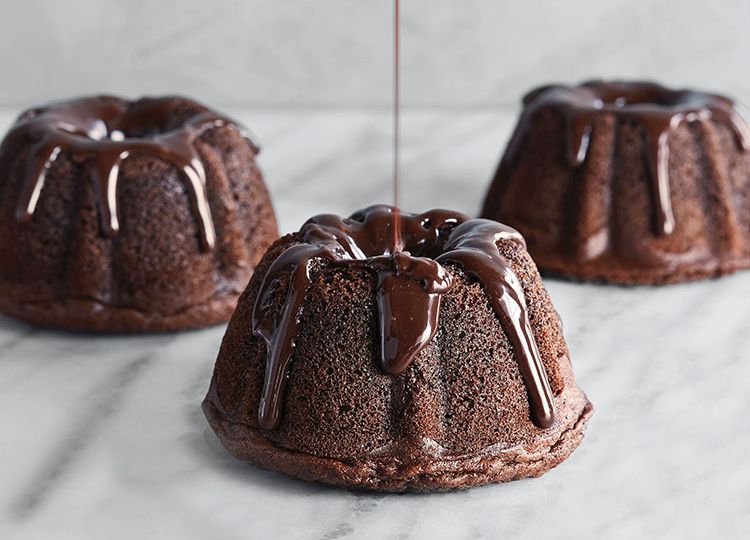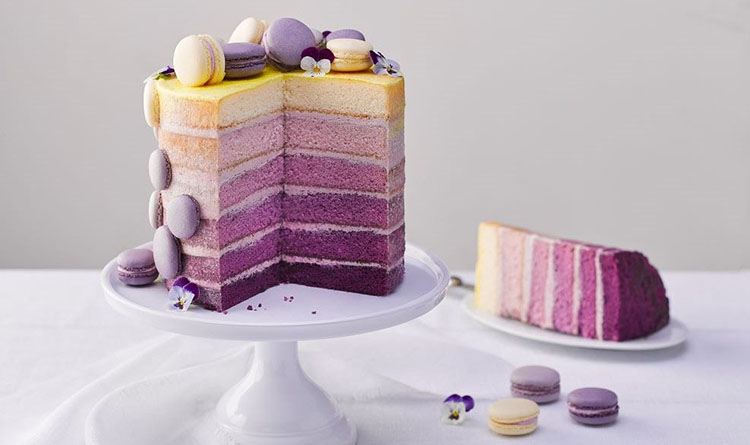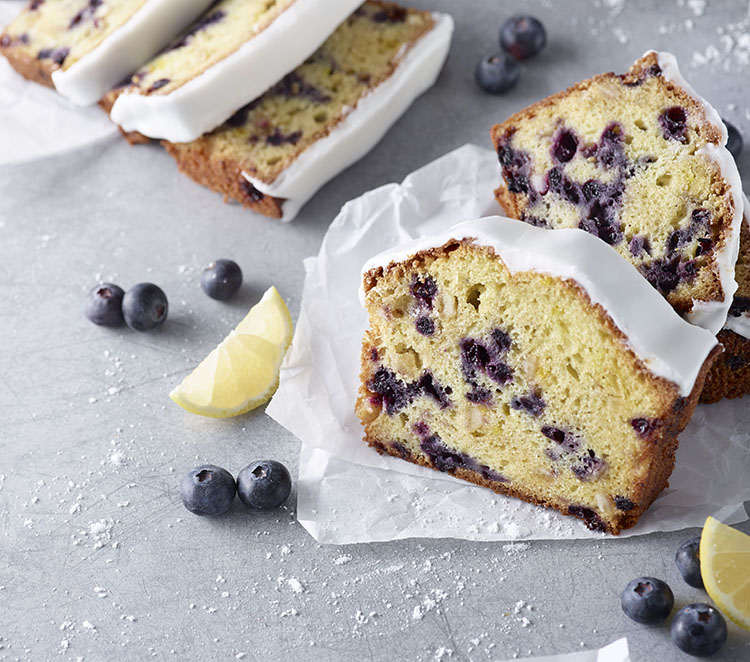
Sunday gatherings, university admissions, Christmas lunches, first dates, rainy-day lunch breaks, or snacking on the go: virtually any occasion, part of the day, or milestone can be accompanied by a unique, memorable cake. Some may have an ‘assigned’ favorite, but any moment can be marked with a different choice of cake. This means there are limitless opportunities to create taste experiences. To do so reliably, cake mixes can help achieve excellent results, every time.
Cakes are, probably, the most generous product category in terms of new product development opportunities. Expanding a portfolio of cakes can be infinitely creative but still a cost-effective process – when using versatile cake mixes. “With only one cake mix, you can create thousands of different cake applications. Think different shapes and formats such as muffins, loaf cakes, or layered cakes, or different consumption moments and occasions, like minis to go with coffee, big bold celebration cakes for Sunday family events, or yogurt loaf cakes for breakfast!”, illustrates Marie Frigo – Category Marketing Manager Dry, Europe & AMEAP, Dawn Foods. From the same starting point of a cake mix bag, unique, signature cakes can be created by filling, decorating, flavoring, or adjusting them as seasons change.
Inventory space is the immediate benefit of working with mixes, but they also ensure quality consistency, no matter how broad the product variations are. They are designed to be easy to use and eliminate the challenges of precision formulating and dosing of raw materials. Layered cakes, for instance, require skills to create the right density: they need to be light and airy, but also able to sustain their height, so the crumb structure must be tight, otherwise, the layers will collapse during baking or shift under their own weight. “The lower the density of the cake, the more air that is needed in the batter and the lighter the cake structure and texture will be. A good layer cake has a tender and moist texture and bakes flat, to create nice, even layers without having to cut off waste,” the specialist explains. Dawn Foods has developed cake mixes that are suited for layered cakes. They are made to create tall cakes, yet still allow firm slices to be cut easily. The addition of water and oil are the only preparation steps for this mix, to achieve consistent flat and even layers with excellent volume.
Getting the mix right and the right mix
Depending on the type of mix, preparation only implies adding water and/or oil and/or eggs, to bake cakes of the desired volume, taste and texture consistently. Mixing speed and time impact the volume of the batter – the mixes come with instructions in this regard.
Cake makers can choose between full mixes or concentrated mixes to best suit their processes. Frigo explains: “For bigger bakery manufacturers with more automated production processes, a concentrate might be the choice. Oil, eggs and flour are added on the production line, giving the bakery manufacturer full control over the type of flour and category of eggs they want to include in their recipes. For smaller bakeries, who struggle with getting qualified and skilled staff, a full mix provides the guarantee that the outcome will be the same, no matter how skilled the person working on the application is.” Besides, having the choice between mixes with and without eggs allows more flexibility in terms of being able to directly control what kind of egg should be selected.
To get the best cake structure possible, the most important recommendation Dawn highlights is to have a clear picture of what application or type of cake will be made, to ensure the right cake mix is selected as the starting base. Dedicated cake mixes cover different types of cakes: sponge, layered and crème cakes. “The biggest difference between these cakes is the texture. A sponge cake is very light and soft, whereas a crème cake is heavier and dense. Sponge cake batters would not hold inclusions, but are best suited as a base to add layers of cream and/or fruit on top or to create Swiss rolls. If inclusions, like pieces of fruits or chocolate are to be baked into a cake, then a crème cake mix would be a better choice,” she highlights. Making this selection correctly is half the journey to a great cake.

Mixes and more
Each type of cake comes with different expectations regarding taste, texture and the performance of the mix used. Dawn has been expanding its range of cake mixes to cover broad consumer preferences and demands for any type of product, from sponge, layered and crème cake, to red velvet and carrot cake. For example, for the ever-increasing ranks of health-conscious consumers, better-for-you options are available in the form of vegan, gluten-free and sugar-reduced cake mixes.
In addition, all of these specialty types of cake mixes come with a complementary range of products, ranging from flavoring pastes to flavor and color the batter, to frostings, custard creams and fruit fillings to fill and decorate cake applications in line with their nutrition label.
Trending: new cakes
Whether for special events or just as a daily indulgence, the cake category continues to evolve and adapt to the latest consumer demands. “With 1 in 10 European consumers stating that they eat cakes at least once a week and 19% of all fresh patisserie consumption in Europe coming from the cake category, there is no better time to innovate and expand cake offerings,” Sarah Browner – Market Research & Insights Manager, Europe & AMEAP, points out.
When looking at cake formats, it is important to include a diverse range of cake sizes to match a variety of consumption occasions, the specialist’s research shows: “While oversized and towering celebration cakes feed the desire for fun indulgence, mini- and bite-sized cakes are the perfect reminder for people to not just celebrate the big occasions, but also the ‘little wins’ in their lives. According to our research, 84% of European consumers agreed that small, indulgent sweet baked goods are a good way to treat themselves.”
Smaller-sized cakes do not only allow brands to deliver a permissible indulgence by helping consumers control their calorie intake but can also encourage new consumption occasions. For example, with 36% of European consumers choosing to eat cake as an on-the-go snack, bakers can tap into this occasion with convenient, mini-sized cake options. This is a space that encourages creativity and unusual experiences: “Building on the desire for interactivity and convenience, food on sticks has emerged into a trend in its own right,” Dawn Foods’ Browner observes, as a range of foods is skewered in some way. “Cake pop or cheesecake on a stick are just some of the concepts we are seeing pop up in the market. These cakes can be covered in icings, loaded with extra toppings and served on a stick for ease of consumption without the need for cutlery,” says Browner.

Flavors are an undeniable decision-maker when it comes to choosing cakes. Dawn’s research shows that florals have been increasing in popularity for a few years now, with cherry blossom, lavender, and rose being among the ones to watch: “Think rose and raspberry madeleines or lavender and white chocolate sponge cake. The distinct sweet, refreshing, and botanical profile that florals offer work well in baked goods,” the specialist points out.
Moreover, nostalgia remains a strong selling point for cakes – evoking joy and bringing feelings of comfort and security. This trend will further develop in 2024, Dawn anticipates, with ‘newstalgia’ becoming a winning strategy. With four out of five Gen Z and Millennial consumers wanting to try new food and food experiences, the blend of newness and nostalgia can address the need for adventure without taking consumers too far out of their comfort zones. “Incorporating flavors from around the world into the next cake offering is one way to tap into this ‘newstalgia’ trend. International flavors take consumers on a culinary journey across the globe, infusing products with the essence of various cultures and regions. We are seeing an increase in unusual blends from different parts of the world coming together such as the Japanese yuzu and Sicilian lemon or matcha and cardamom,” according to the research specialist. As consumers are seeking colors and flavors that challenge traditions and break boundaries, rich, vibrant colors and flavors, unconventional combinations, and tastes from under-represented regions will shine in the cake category in 2024, the specialist anticipates.
Dietary needs and preferences should also be reflected in cake offerings, as consumers internalize how diets shape their physical and mental health. Cakes that provide clear information about their nutritional profile and ingredient list meet these concerns for all eating occasions. Claims that cakes are suitable for various types of diets, such as gluten-free or vegetarian, have been relatively stable over the past five years. Vegan and plant-based claims, however, have seen notable growth of 28% in product launch activity in the same timeframe. Cakes that fall into these categories are not without challenges to perfect, though. Mixes take the problems out of the equation. “The broad range of plant-based ingredients and mixes available have elevated vegan cakes to a level of indulgence that can easily rival, and in many cases, outshine their non-vegan counterparts. We predict that vegan will become the standard for many applications as bakers will try to cater to all customer dietary requirements in a single product,” Browner anticipates.


